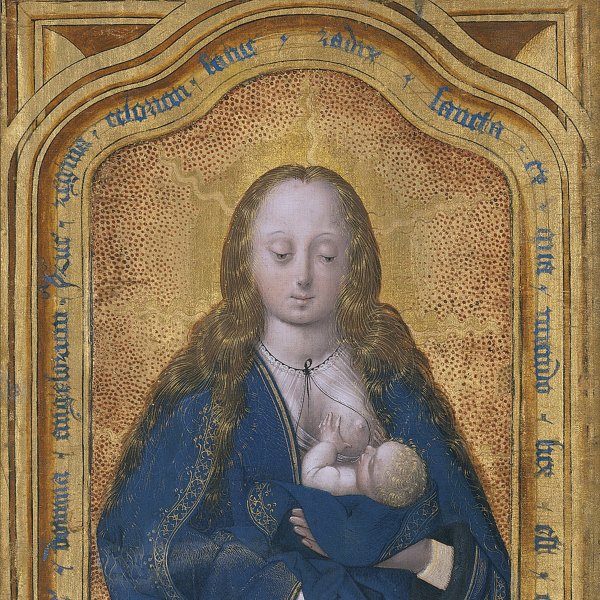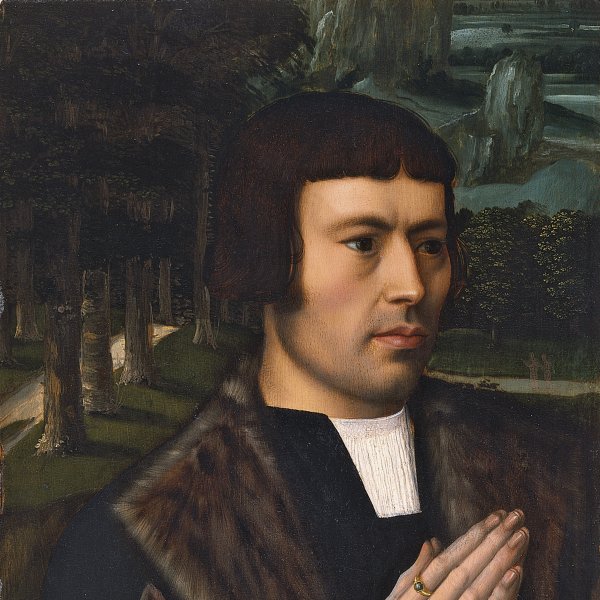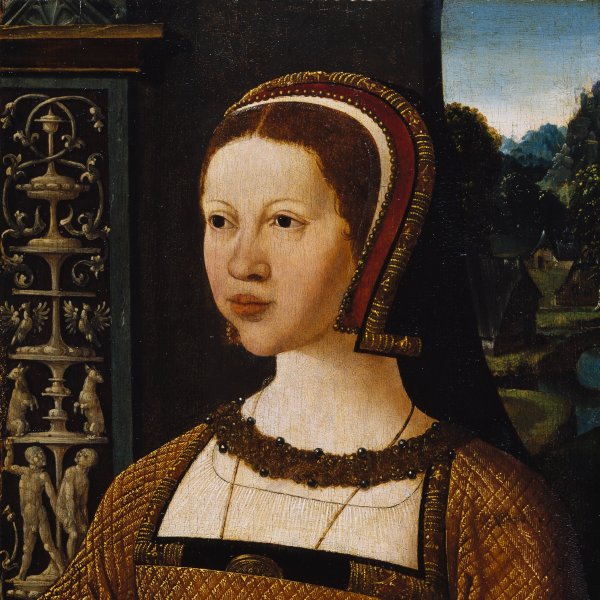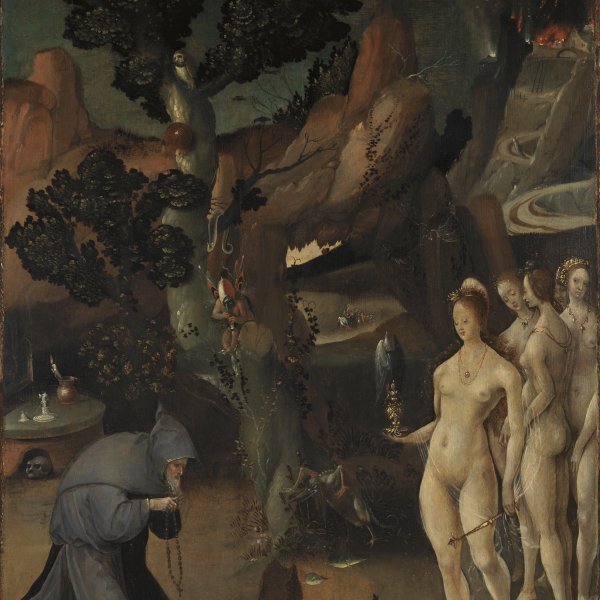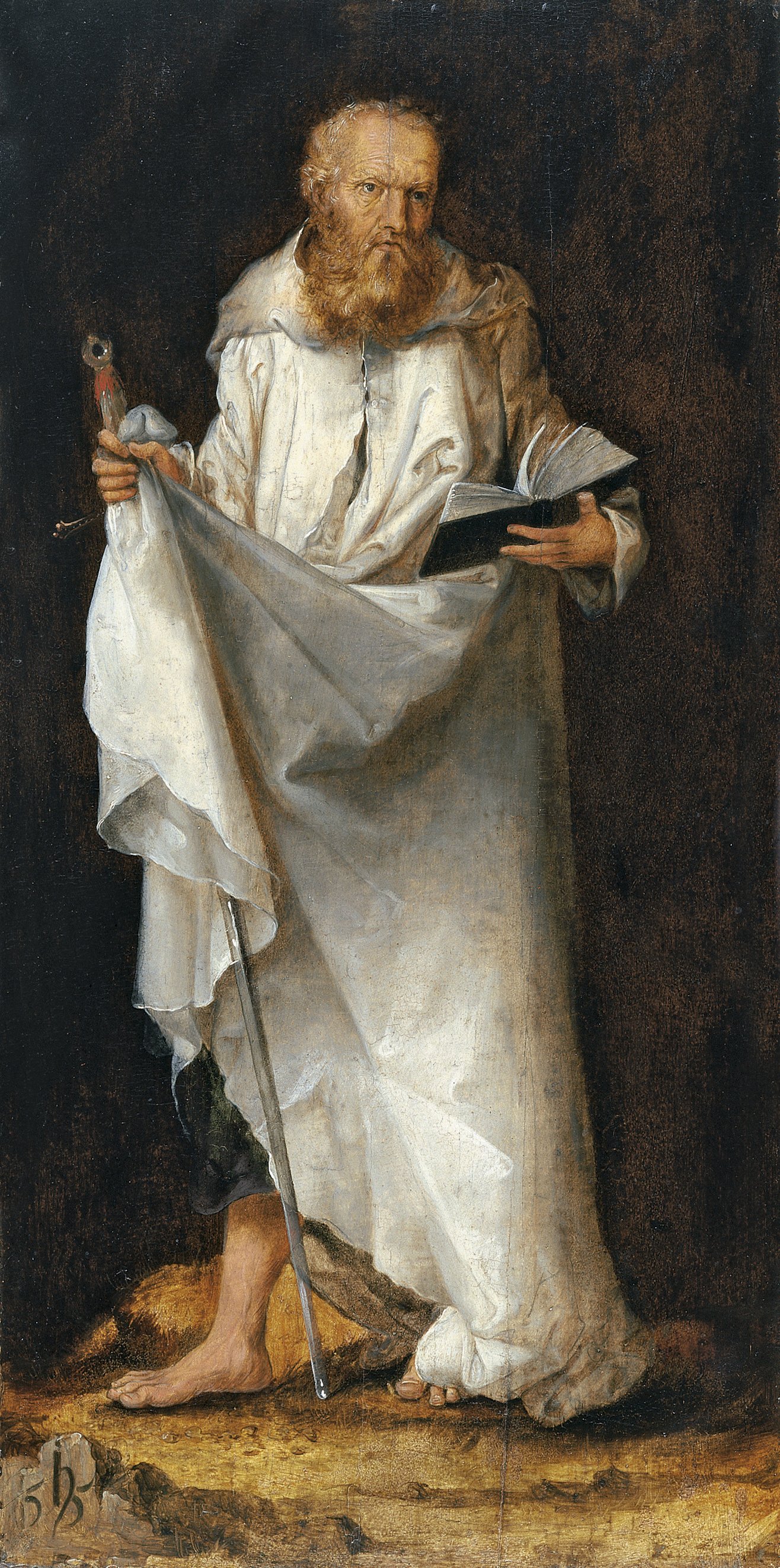Saint Paul
This work was attributed to Lucas van Leyden until 1989 when Colin Eisler associated it to an anonymous painter of his circle. This change in attribution is largely due to the presence of the date and the calligraphy of the letter “h” visible at the lower left corner. Saint Paul, who heard the voice of God on a journey from Jerusalem to Damascus and consequently converted to Christianity, is depicted with his habitual attributes of a book, referring to the word of God that this Apostle spread, and the sword with which he was decapitated. Due to the long, narrow shape of the panel it has been suggested that it might have been part of an altarpiece together with a painting of Saint Peter. The present figure is similar to a Saint Philip in a print by Hans Baldung Grien. Both are depicted alone, in similar poses and bearing their attributes, suggesting that this anonymous artist might have used the print as the basis for his composition.
This Saint Paul was attributed to Lucas van Leyden between 1929 and 1989, at which point Colin Eisler re-attributed it to an anonymous master. Among the reasons for this change of opinion were the date of 1525 and the letter “h” at the lower left corner on the stones. As noted in previous catalogues of the Collection, R. Winkler associated this initial with Van Leyden’s second name, which was also the name of his father Hugensz. This unusual procedure in Lucas van Leyden’s work was not accepted by Eisler who thought that the letter referred to the name of a follower of the artist.
The painting was in the Esch collection in Cologne, where it was to be found in 1929. After that it belonged to the art historian Wilhelm Suida in New York and to Bertina Suida-Manning. In 1981 it was acquired by Baron Hans Heinrich Thyssen-Bornemisza as a work by Lucas van Leyden for his collection at Villa Favorita.
Saint Paul, who was one of the two principal Apostles together with Saint Peter, was born in Tarsus and was a Roman citizen. Prior to his conversion his name was Saul and during his youth he had little sympathy for the teachings of Christ, even taking part as a spectator at the stoning of Stephen, the first Christian martyr. Paul converted to Christianity during a journey from Jerusalem to Damascus during which he heard the voice of God while he was dazzled by a beam of light. From that moment on he began a new life and became of the great channels for the dissemination of the Christian message, preaching in Damascus, Cyprus, Asia Minor, Greece and Rome. He was beheaded in the latter city. Of a passionate nature, Saint Paul is usually depicted bald with a beard and with the sword with which he was martyred, as seen here, and the book referring to the word of God.
The characteristics of this panel have led to the suggestion that it was part of a small altarpiece whose other lateral wing depicted Saint Peter. The two Apostles are frequently depicted together as they are symbols of the Universal Church.
The figure of Paul has been compared to a print by Hans Baldung Grien of Saint Philip. The similarities lie in the manner of presenting the figure, isolated against a plain background and with only some stones and grass in the foreground to refer to the exterior. Both hold an open book in one hand while with the other they hold up their robes and carry their attributes. In addition, both saints rest their weight on one leg with the other lower leg and foot projected towards the viewer. The similarities also extend to the type of robe and the way in which the drapery falls to create large areas with faint creases. The parallels between this panel and Baldung Grien’s print raise questions regarding the attribution of the present panel and its place of origin.
Mar Borobia





